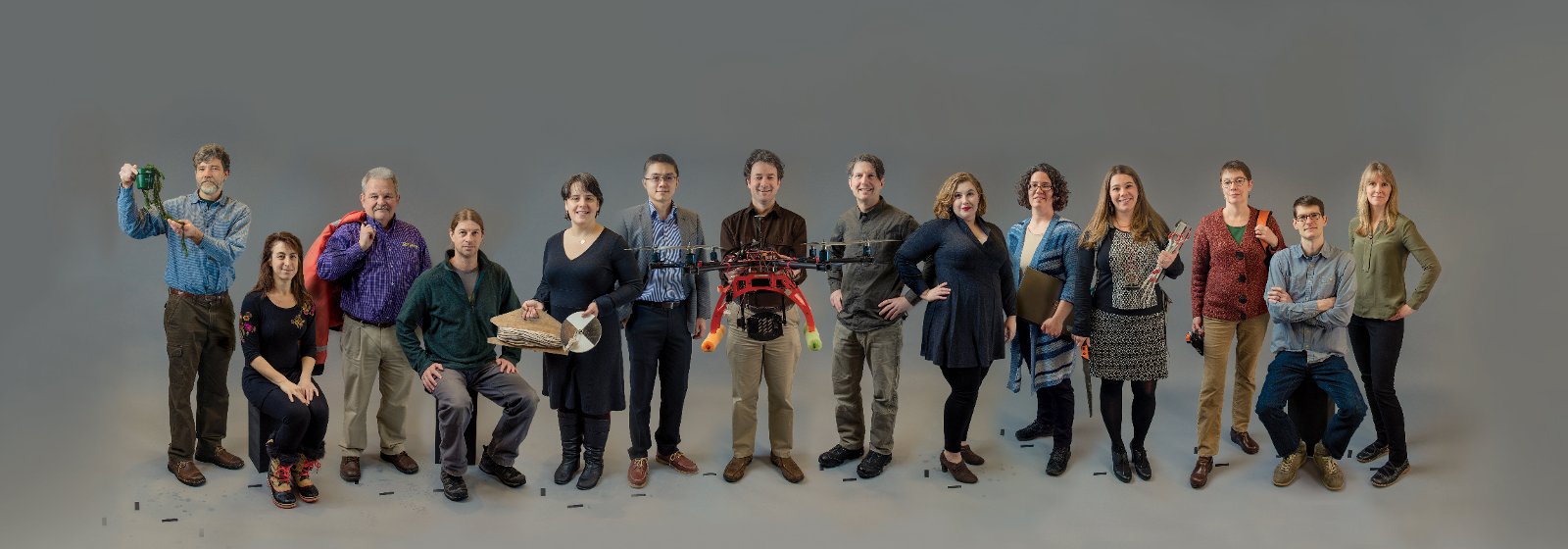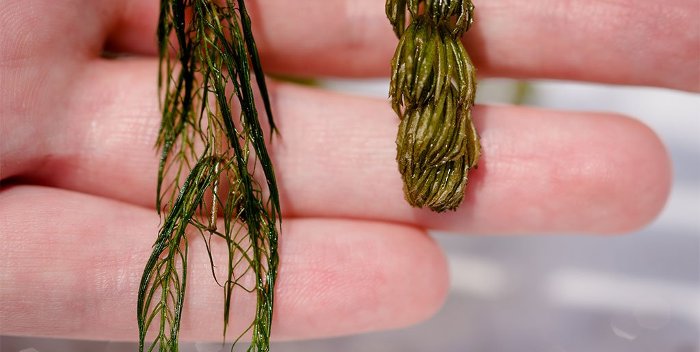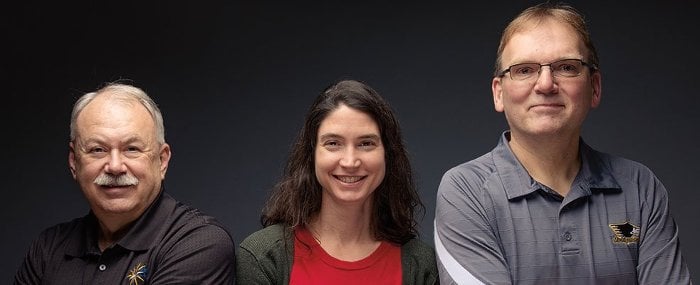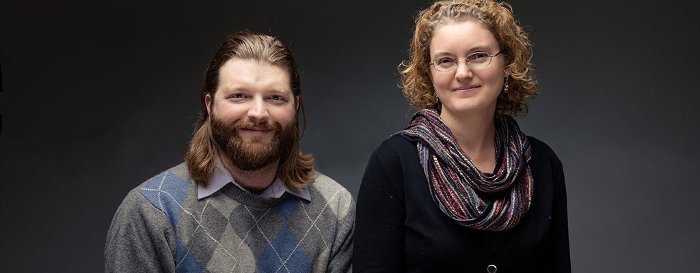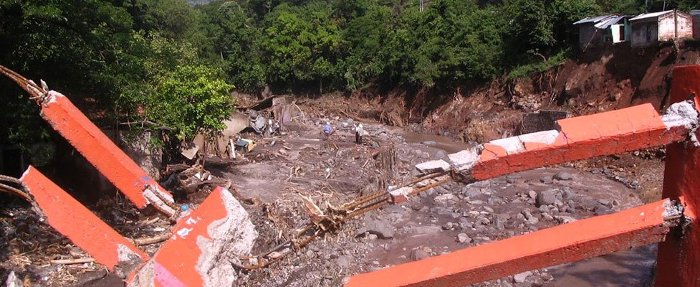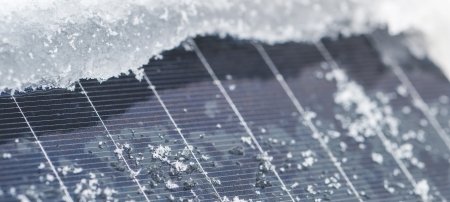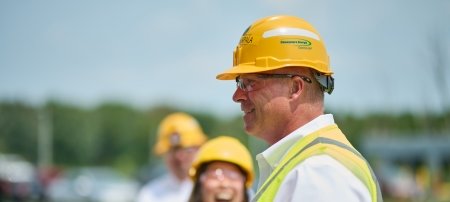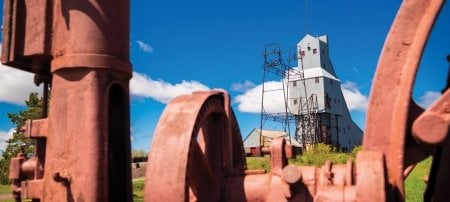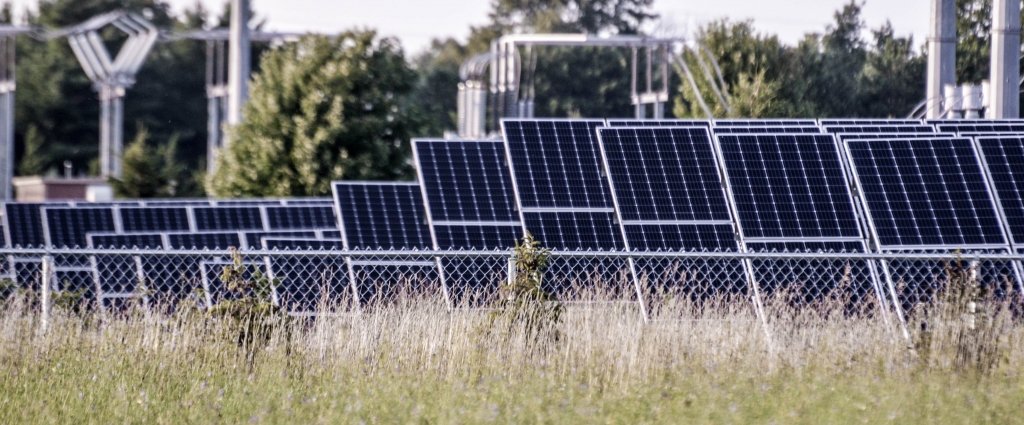Some people say there is no "i" in team. That’s because they’ve never done interdisciplinary work before. For a small university in a small town, we're making a big difference.
Interdisciplinary encompasses research from different fields of study. For some researchers that means piling on prefixes and thinly slicing research problems, like a biogeochemist studying micronanotech accumulations in histosol soils. That's highly specialized.
Rather than narrowing down, our interdisciplinary work is about broadening and applying research, improving on interdisciplinary methods. We're taking collaborative work to the next level. Some of projects are transdisciplinary—bringing in non-scientists and working across disciplines instead of at the convenient intersection of disciplines. Others are translational—turning basic science into applied science.
"You take all these different experts and get them working on the same problem, then you find out all these different dimensions."Guy Meadows
This article showcases some of the Interdisciplinary 2.0 projects happening at Michigan Tech. There's everything from repurposing minewater reservoirs to detailing black carbon particles to including people in geohazards assessments. Teamwork drives this research—and success centers on how well teams can bridge their individual disciplines. It's humbling. Each researcher doesn't know all the answers; by working together, they can share their knowledge and learn from others, which better equips them to solve entrenched problems and dig into new research ideas.
This kind of interdisciplinary work is just how we do research at Michigan Tech.
Solar
The solar industry is skyrocketing.
In the past several years alone, the nation's tally of new photovoltaic installations has nearly doubled. For the first half of 2015, the Solar Energy Industries Association (SEIA) reports that solar supplied 40 percent of all new electric generating capacity, surpassing every other energy sector. Next year, SEIA forecasts 25 to 50 percent industry growth.

Traditional panels are made out of silicon wafers. But that's old news to materials science researcher Chito Kendrick, who is starting to look at indium gallium nitride photovoltaics. Along with Joshua Pearce, who has a joint appointment in materials science and engineering as well as electrical and computer engineering, the two are examining new material combinations to see what works best. In Kendrick's microfabrication lab, they parse through the inner workings of solar cells.
Pearce has also collaborated with Durdu Güney and Paul Bergstrom in electrical and computer engineering. Their plasmonic enhancement research, often coupled with nanostructures, maximizes how light is trapped in the cells, which can increase energy output. Similarly, materials science researcher Yun Hang Hu is pushing the boundaries of solar tech by using graphene to increase efficiency. He also works on dye-sensitized solar cells, which combine the inorganic materials widely used now with organic materials.
These researchers live in an inherently interdisciplinary world. Not a single one falls into a traditional materials or electrical background. Being interdisciplinary in their own training enables them to collaborate more easily and see engineering challenges from different angles.
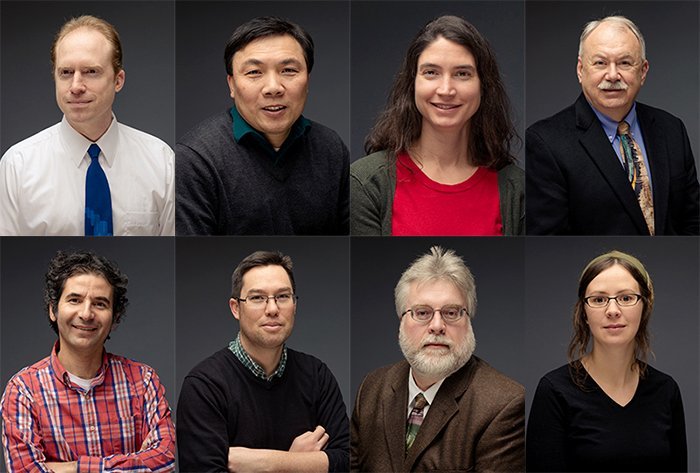
Specifically for solar, that collaboration continues outside the lab. Michigan Tech's Keweenaw Research Center, directed by Jay Meldrum, offers an ideal location to test panels outside—and test how they handle snow-loading strain in winter-weather conditions.
Beyond materials and testing, solar technology is only good if people are willing to install it in homes and businesses. Sociologist Chelsea Schelly wants to better understand what it takes to get solar on homes, especially in rural communities. To Schelly, solar energy is about more than a trendy way to get electricity; it's about building resiliency and independence in places that have limited access to energy resources and infrastructure. Her colleague, Richelle Winkler, has also collaborated on similar work with an emphasis on the demographics of solar adopters.
Understanding community dynamics is also important in the world of aquatic plants, where one invasive species is encroaching on the northern Great Lakes.
Milfoil
Milfoil has impacted tourism economies and choked aquatic ecosystems. Long the bane of Midwestern lakes in summer, milfoil—specifically, Eurasian Watermilfoil (EWM) and its hybrids—have been spreading into the northern Great Lakes over the past decade.
A Michigan Tech transdisciplinary team plans to stop it.
But, how do you stop an invasive species that is so adaptable and tenacious? And it's not a single plant or even a single species: EWM hybridizes with its native cousin, making for a genetic spectrum that is hard to pick apart in a lab, let alone on a rocking boat in an infested lake.
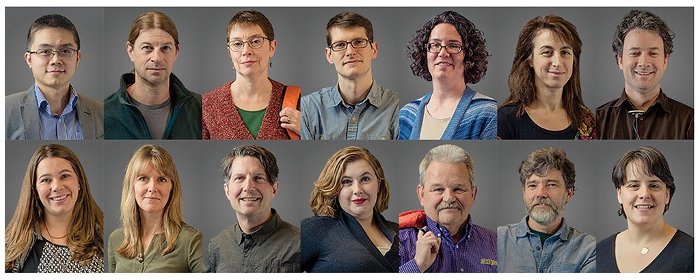
To handle such an entrenched invasive—most of the Midwest and parts of the East and South have been battling EWM for several decades—the team spans several disciplines, uses cutting-edge technology, and partners with local communities.
"You take all these different experts and get them working on the same problem, then you find out all these different dimensions," says Guy Meadows, director of Michigan Tech's Great Lakes Research Center (GLRC), which serves as a project hub for invasive milfoil research.
Meadows focuses on underwater sonar imaging and mapping, while other team members run supercomputer models, analyze milfoil genetics, keep tabs on ecological impacts, track milfoil stands using drones, and survey treated areas to test treatment effectiveness. The team works with communities in Michigan's Upper Peninsula that offer input and help set the bounds of the treatments to get rid of EWM.
Casey Huckins, a professor of biological sciences at Michigan Tech, is the lead researcher for several milfoil projects funded by the Environmental Protection Agency and Michigan Department of Natural Resources. As a biologist with research experience on the ecology of aquatic invasive species, he thinks of EWM as an invading plant—knowing that "controlling it like a weed" is a common management technique.
"Some people say, 'throw at it whatever you have, as much as you have,' so we can just get rid of it," Huckins says, explaining that milfoil treatments can include mower-like harvesters, beetles, fungi, and herbicide applications. Some communities don't like that. "So we're trying to figure out what's the level of the threat and at what point does that threat require treatment," Huckins adds.
Connecting the threat and treatment is not so straightforward, especially because of the genetic variability. Preliminary data shows that the hybrids may actually be more adaptive and harder to control than straight EWM. But knowing the plant's limits helps; for example, it doesn't do well in deep water, seeking shallow bays instead. Understanding these preferences—and potential adaptations—will help determine the best treatments and predict where invasive milfoil might spread next.
"Some people say, 'throw at it whatever you have, as much as you have,' so we can just get rid of it."Casey Huckins
That's where Pengfei Xue, an assistant professor of civil and environmental engineering, steps in. He runs models for the project on the supercomputer Superior, housed at the GLRC. One of those models assesses water current patterns, water temperature, depth, and other factors that favor milfoil. The data could help predict where milfoil will show up next; remote sensing and in-the-boat surveys help validate the predictions.
Colin Brooks, a senior research scientist at the Michigan Tech Research Institute (MTRI), uses remote sensing to keep tabs on EWM.
"Satellite imagery is useful for large spaces. But for smaller areas, UAVs [unmanned aerial vehicle or drones] are better and more discerning."Colin Brooks
From up in the sky to down on the water, the Michigan Tech team is working with communities to put EWM in its place—and remove it from the places we love before they're overgrown.
Fire also overruns places we love and admire. A team of Michigan Tech Research Institute scientists is working to hold back the flames to better protect lives, property, and iconic landscapes in the West and Alaska.
Fire
By Jennifer Donovan and Nancy French
It's redolent of cozy, crackling logs or the destruction of priceless timberlands. But to those knowledgeable about fire research, it calls to mind an interdisciplinary team of Michigan Tech Research Institute (MTRI) scientists and engineers.
MTRI is known for its remote-sensing expertise, using satellite imagery to track hitherto-hidden data. And remote-sensing technology has thrust MTRI researchers to the forefront of wildfire research. From the Alaskan tundra to the forests of California, they have mapped and monitored wildfires and their impact on the environment.
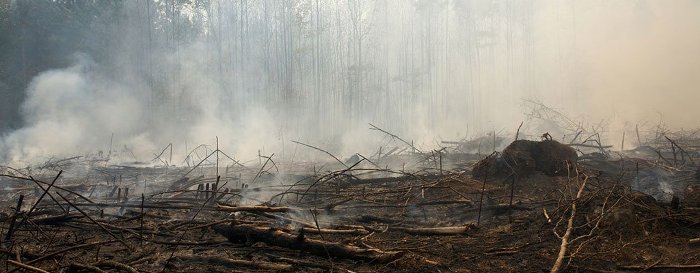
Nancy French and Laura Bourgeau-Chavez, senior research scientists at MTRI, have been working with the Alaska Fire Science Consortium since 1990. Their first fire research in Alaska studied the extensive fires that burned more than three million acres in the interior of Alaska that year. Using synthetic aperture radar (SAR) and historical records, they helped create the first state-wide digital map of wildfire perimeters. This map evolved into an interactive Alaska Fire History map currently in use, making fire data publicly available to management agencies and researchers alike.
The MTRI team's main focus continues to be the role of fire in carbon cycling, the process by which carbon is exchanged between living organisms and the environment. The group has grown to eight investigators who work collaboratively with geographers at the University of Maryland, where one of the original researchers, Eric Kasischke, now works.
Carbon cycling is directly related to the creation of excess carbon dioxide (CO2), called "greenhouse gas" because it acts like a blanket over the planet, trapping heat. The result: climate change.
To determine the impact of fire on carbon cycling, the team developed methods to quantify wildfires' consumption of duff—the partially decayed organic matter on the forest floor—and to understand the variables that drive consumption and emissions in the forests of the sub-arctic region, known as boreal ecosystems. They learned that estimates vary based on site location and vegetation (fuel) type.
The research team also developed new, more accurate models that account for fire weather and changes in fuel moisture, one of the main drivers of variability in fire emissions.
As a result, fire and fuels management specialists have been able to improve their fire danger modeling and forecasting.
The MTRI team's research in northern North America now is part of the National Aeronautics and Space Administration's (NASA) Arctic Boreal Vulnerability Experiment (ABoVE). Bourgeau-Chavez and French are continuing with the help of Liza Jenkins at MTRI and Evan Kane with the School of Forest Resources and Environmental Science.
But French doesn't spend all her time in the frozen north. With a grant from the National Institutes of Health, she conducted a study of the health threats produced by the smoke from wildfires. Once again, she worked with an interdisciplinary team including Brian Thelan, a MTRI statistician; Shiliang Wu, an associate professor of geological and mining engineering and sciences at Michigan Tech who is an expert in atmospheric chemistry, air quality, and climate change; Michele Ginsberg and Jeffrey Johnson with San Diego County Public Health Services; and Tatiana Loboda, a University of Maryland geographer who specializes in analyzing future fire risk.
"We know that climate change may cause an increase in the frequency and intensity of wildfires. What we don't know is whether future fires will produce more particulate matter and what effects this change might have on people's health."Nancy French
Her study found that the likelihood of people seeking emergency care due to wildfire smoke from the 2007 fires increased 41 percent for the entire San Diego County region and 72 percent in sub-regions most affected by the smoke.
"This type of analysis can be useful for emergency preparedness and public health decision-making," French points out.
Meanwhile, MTRI research engineer Mary Ellen Miller has been studying fire remediation to assess and prevent erosion, mudslides, and floods after a wildfire goes out. During the 2015 fire season, her team, including MTRI research scientist Michael Billmire, created post-fire erosion risk maps for the Butte and Valley fires in California. Miller is also working on improving model performance by studying the 2012 High Park Fire that burned in the Front Range of Colorado.
"Healthy forests create healthy watersheds," Miller says, explaining that runoff and erosion are rare when vegetation and forest litter protects the soil. But fires can consume those protective layers and increase the risk of floods and landslides. Hot gases from burning organics can clump around soil particles, making the soil water repellent—like a raincoat—and causing the water to run off the soil rather than soaking in. With satellite images that characterize the burned areas, Miller creates hydrological models with parameters based on how much ground cover is left, fire impacts on soil, soil texture, climate, slope angle and length, and other factors. This information forms a database used to model post-fire erosion and runoff. These predictions can be used by land managers to determine what kind and how much remediation might be effective after a fire.
Want to see more?
A preliminary database with information for the western states is now online. Modelers can choose fires or a historical fire, or upload a new burn severity map.
Designer Probes, Protein, and Energy Gaps
Proteins are like nanomachines that carry out important biological functions in our body—their complex forms have to fold flawlessly in order to work properly. But sometimes they can misfold. This misfolding causes the proteins to get sticky, leading to aggregation, which is the hallmark of neurodegenerative diseases like ALS, Alzheimer's, and Parkinson's.
Protein stickiness is a result of surface hydrophobic interactions. But it's hard to measure. A team of biochemists, synthetic chemists, and physicists are working to improve that. Their research on hydrophobicity detection with BODIPY-based fluorescent probes was published in Scientific Reports in December 2015.

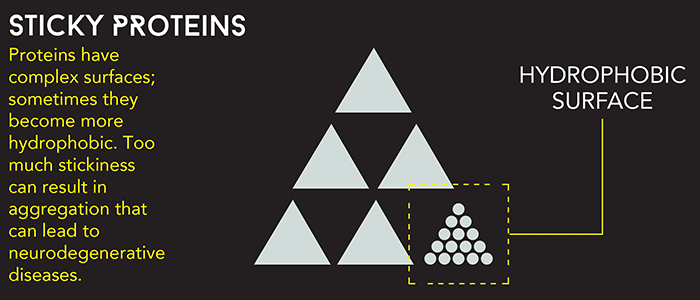

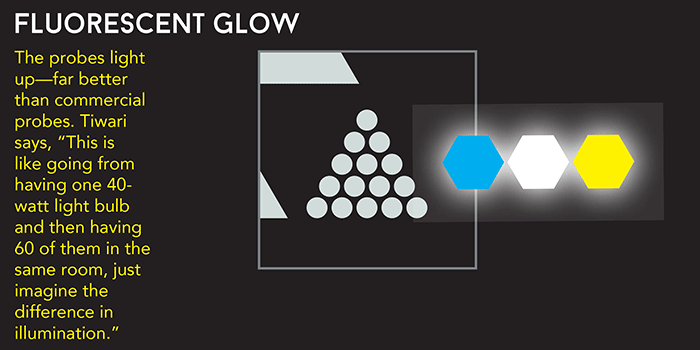 Using the fluorescent probes, biochemist Ashutosh Tiwari measured hydrophobicity in three proteins: Bovine Serum Albumin (BSA), apomyoglobin,
and myoglobin. Compared to a commonly used commercial sensor (ANS), these new BODIPY-based
hydrophobic sensors showed much stronger signal strengths, with up to a 60-fold increase
in BSA.
Using the fluorescent probes, biochemist Ashutosh Tiwari measured hydrophobicity in three proteins: Bovine Serum Albumin (BSA), apomyoglobin,
and myoglobin. Compared to a commonly used commercial sensor (ANS), these new BODIPY-based
hydrophobic sensors showed much stronger signal strengths, with up to a 60-fold increase
in BSA.
Tiwari collaborated with Haiying Liu, who as a synthetic chemist, practices both the science and art of crafting molecules. Liu's team created the fluorescent probes, a magnified version of which is seen in the illustration.
"This is like going from having one 40-watt light bulb and then having 60 of them in the same room, just imagine the difference in illumination."Ashutosh Tiwari
Then, to better understand how the probes worked—and why they are so much better than ANS—Tiwari turned to physicist Ranjit Pati. The team shed light by carrying out the first-principles electronic structure calculations to measure the energy driving the probes' fluorescence. The energy gap for several of the sensors is about 2.2 electron volts, ideal for fluorescence.
Nethaniah Dorh, the study's lead author and a doctoral student with Tiwari, focused on this work for his dissertation. "As a graduate student, going forward I have an understanding that collaboration is key to progress—no man is an island," he says.
Geothermal
Minewater isn't wastewater— it could be a major energy source. Only 30 active minewater geothermal systems exist in the world, and one of them is at Michigan Tech's Keweenaw Research Center (KRC), directed by Jay Meldrum.
Chris Green, senior research engineer, oversees the KRC's minewater geothermal system. The resource could also be an asset for the greater Keweenaw community. In order to understand the barriers, economic benefits, and community make-up, they brought on Richelle Winkler, a sociologist specializing in environment, population, and rural community development.
The project is collaboration among an award-winning team of students from mechanical engineering, environmental policy, electrical engineering, energy development, and communications. They recently took home an award from the American Institute of Chemical Engineers' Youth Council on Sustainable Science and Technology.
Learn more about the Alternative Energy Enterprise's geothermal work at Michigan Tech.
Hidden Engineering
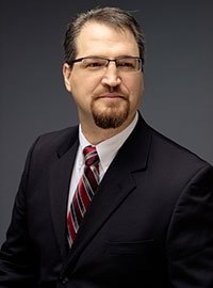
People expect their roads, bridges, and traffic signals to work, just as they also expect drinking water, sanitary sewers, culverts, and storm drainage systems to be invisible and functional. With a $4.7 million grant from the Environmental Protection Agency, Michigan Tech's Center for Technology and Training (CTT) will expand how it uses continuing education, engineering software, research projects, and technical assistance to help infrastructure owners figure out how to make sure everything works.
Tim Colling is the director of the Center for Technology and Training and he coordinates a team of structural engineers, software engineers, communications specialists, and civil engineers. They're a "helpdesk for engineers" running behind-the-scenes problem solving to keep our country's infrastructure up and running.
"Everybody is looking for that silver bullet to solve infrastructure problems. People don't realize that these are the challenges engineers deal with every day, and there is no simple solution."Tim Colling
CTT Annually Provides
- 120 continuing education events reaching over 5,000 people
- 24,000 hours of training
- 1,800 hours of one-on-one technical assistance
Black Carbon
Dust specks are touted for their insignificance. But despite their small size, they are responsible for the clouds in the sky and for having a profound effect on climate. Black carbon particles, in particular, have global impact. Our Michigan Tech researchers collaborated with a team from the Los Alamos National Laboratory and several other universities to shed light on the complex way black carbon, other atmospheric particles, and solar radiation interact to affect how they are warming the atmosphere. The research came out in Nature Communications in September 2015.
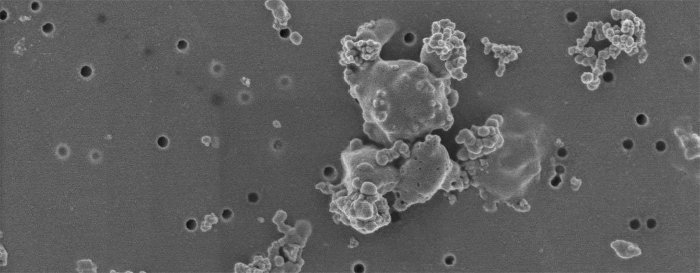
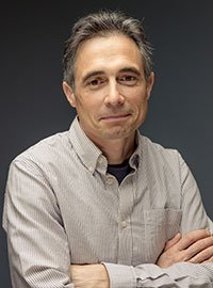
Physicist Claudio Mazzoleni led a group of students who focused on the project's microscopy work. The tiny particles of black carbon— basically soot—are about the size of cornstarch dust. They come from cooking fires, auto-mobiles, industrial plants, wildfires and other kinds of burning, but don't stick around long in the atmo- sphere as their chemistry is altered. Even their brief stint makes for some atmospheric warming. Because of that, "Short-lived pollutants match up better with short-term political timelines," Mazzoleni says.
Geohazards
There is nothing soft about bringing a social scientist into physical science research. In the Interdisciplinary 2.0 world, antiquated divisions between disciplines—especially the "hard" and "soft"—hinder applied research. Instead, incorporating social science indicates a willingness to step into the complexity of real-world science and make people part of the equation.
Few demonstrate this better than geoscientist Luke Bowman and ethnographer Kari Henquinet, who is also the director of Michigan Tech's Peace Corps Master's International Program. Last year, the two co-authored a study in the Journal of Applied Volcanology focused on Bowman's doctoral research. John Gierke and Bill Rose, geological engineering and sciences, co-advised the "social geology" research.
A number of people live not just near volcanoes, but on them. For these communities, eruptions are only one of the risks—other geohazards like landslides, debris flows, and flooding pose more frequent threats.
At the San Vicente Volcano in El Salvador, Bowman and colleagues from El Salvador and Michigan Tech analyzed physical data—everything from rainfall to slope stability calculations—and gathered social data from one-on-one interviews, community gatherings, and key documents. This enabled Bowman and Henquinet to look into reasons why people live in such hazardous places and to suggest more realistic evacuation plans and emergency protocols. With the local communities invested in the work, they could account for social vulnerability as well as geophysical vulnerability.
Northern Institute of Applied Climate Science (NIACS)
Collaboration within science disciplines can be a challenge. This is especially true for academic and government natural resource scientists collaborating with land managers.
It's a classic Ivory Tower problem. The data gathered by university and agency researchers don't always make it to the managers of federal, state, tribal, and private lands. With climate change, in particular, the research is continuously refining, predictions are nuanced, and many of the most important findings are global in nature— difficult to incorporate into a land management plan for just 10,000 acres within a specific ecosystem. It's a challenge land managers face across the nation.
The Northern Institute of Applied Climate Science seeks to bridge that gap.
The effort is a partnership between Michigan Tech's School of Forest Resources and Environmental Science and the U.S. Forest Service.
Michigan Technological University is a public research university founded in 1885 in Houghton, Michigan, and is home to more than 7,000 students from 55 countries around the world. Consistently ranked among the best universities in the country for return on investment, Michigan’s flagship technological university offers more than 120 undergraduate and graduate degree programs in science and technology, engineering, computing, forestry, business and economics, health professions, humanities, mathematics, social sciences, and the arts. The rural campus is situated just miles from Lake Superior in Michigan's Upper Peninsula, offering year-round opportunities for outdoor adventure.
